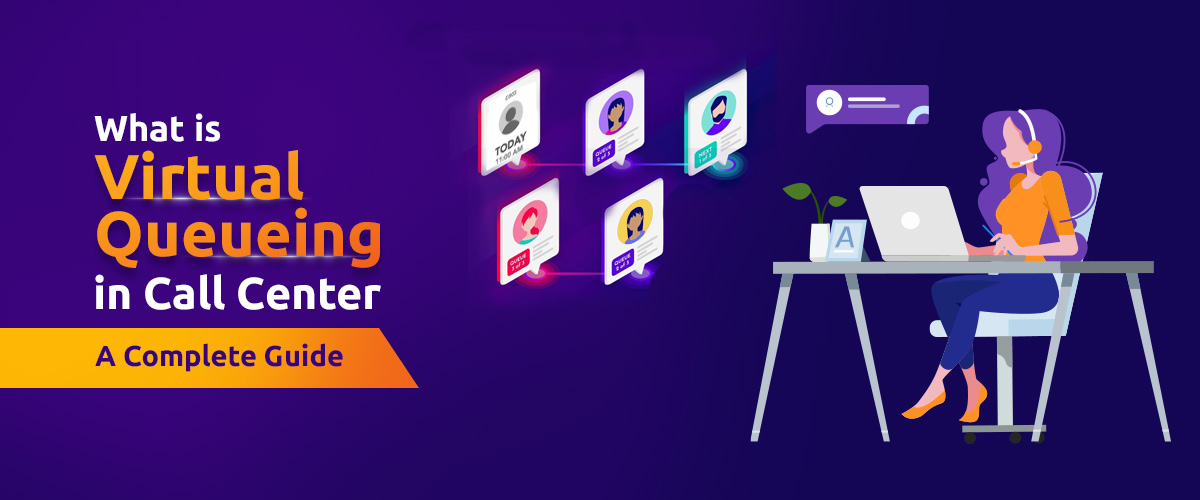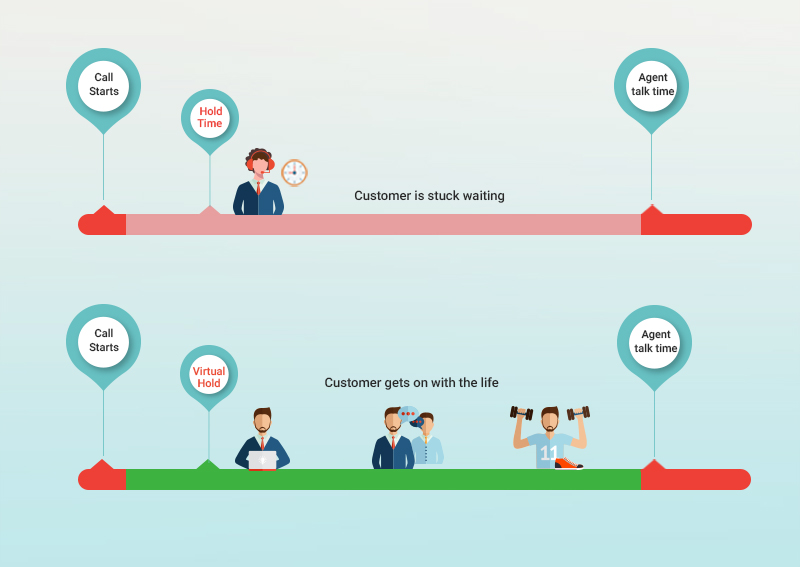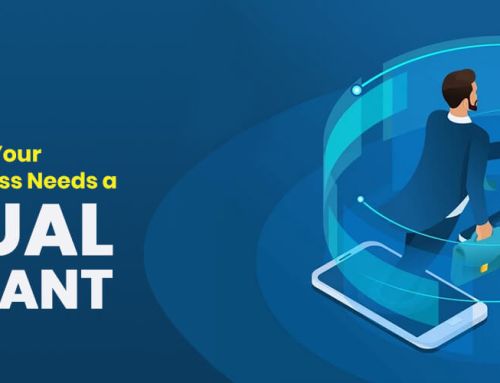The very foundation of any call center depends upon how satisfied its customers are after reaching them for a quick resolution of their issues or resolving their queries, but what if they get stuck in the queue and have to wait long to get in contact with the call center agent?
Sounds really frustrating right?
Yes, it is! And this may also lead to call abandonment or dissatisfied customers.
However, there is a once and for all solution for call centers with huge call volumes
And the name is ‘Virtual Queuing System’
But before getting on to the benefits, we need to first understand what it actually is and how it works, what are the types, and then we will discuss the pros and cons of virtual queuing.
Ready to dive in?
Let’s go…

What is Virtual Queueing in Call Centers?
Virtual Queueing is basically a concept within inbound call center services where an Automatic Call Distributor (ACD) is applied to distribute the calls to various agents as per the expertise in case there are huge call volumes, but long queueing or call waiting can result in call disconnect, call re-attempts, and dissatisfaction.
This system, however, provides an option for customers to receive a call from the agent on behalf of your business in case the wait time is long, and you don’t want your customers to lose interest in your brand.
In short, it is basically a computerized system where customers can choose to wait virtually and secure their place to receive a call from the contact center.
How Does Virtual Queueing Work?
This is basically a 3-4 step process that enables your customers to enjoy their time doing other activities while they are on virtual queueing with your business.
The steps involved:
Step 1- A customer calls your business contact center.
Step 2- Either the call is received immediately by the agent or an IVR system allows your customer to choose the virtual queueing option, in case no agents are available.
Step 3- The virtual queueing system asks for your customer’s contact details and the reason for the call and places him/her in the virtual queue.
Step 4- When the customer’s slot comes, a free agent calls back to get the job done.

What Are The Types of Virtual Queue Management?
This inbound call management system is much more than you can think of for a business and basically gives two major options to customers to choose from including-
FIFO (First In, First Out)
In the First in first out virtual queueing type, a customer can maintain his/her position in the queue the same as if they have waited for an on-call hold. By opting for this option, a customer receives a call from the agent as soon as any agent gets free of the other call.
Scheduled
This type of queueing fixes a spot for customers to receive a call from the agent in the future, typically when the call volume is comparatively low or so. This gives more time to the customer to get themselves engaged in other activities.
The Scheduled Virtual Queueing is further divided into 3 types:
- Datebook Type Scheduling: Customers are given a choice to opt for a particular time slot to get the call back from the agent.
- Timer Scheduling: A call is received by the customer after a set time period is passed and in this, a customer knows when to expect a call.
- Forecast Scheduling: The customer will receive a call back in the future with no set time limit. This call is generally made when the call volume is comparatively low.
What Are the Channels Used to Join Virtual Queueing?
There are multi channels for virtual queueing that can be used by customers to join it
- By calling on the customer support number using telephone or mobile
- By automatic bot or virtual chat system
- Via website pop-ups to be filled for information
- Mobile application allowing the process
What Are The Benefits of Virtual Queueing in Call Centers?
With this technology, a business gets profits in many ways as the hold time gets eliminated. The most significant benefits availed by this are listed below-
What Are The Limitations of Virtual Queueing in Call Centers?
While there are many benefits of this unique technology, there are some limitations too. A few are listed below
- Not optimized for emergencies or any unforeseen issues
- Glitches and system errors in the software or technology can hinder the productivity
- Both the contact center and the customer have to be equipped with quality internet or wifi signal to get the process done
- Can be a costly option, especially for small businesses that have limited funds to work with.
- Can’t work in the businesses where customers want immediate solutions to their problems
Hope this blog has guided you to understand the topic inside out and based on this information you could figure out whether this system will be helpful for your customers and business or not.
We at ProGlobalBusinessSolutions provide the most professional and affordable call center services. We have a huge portfolio of services we offer to our clients based on their business requirements.
Want any customer support related help? We are happy to serve you!

